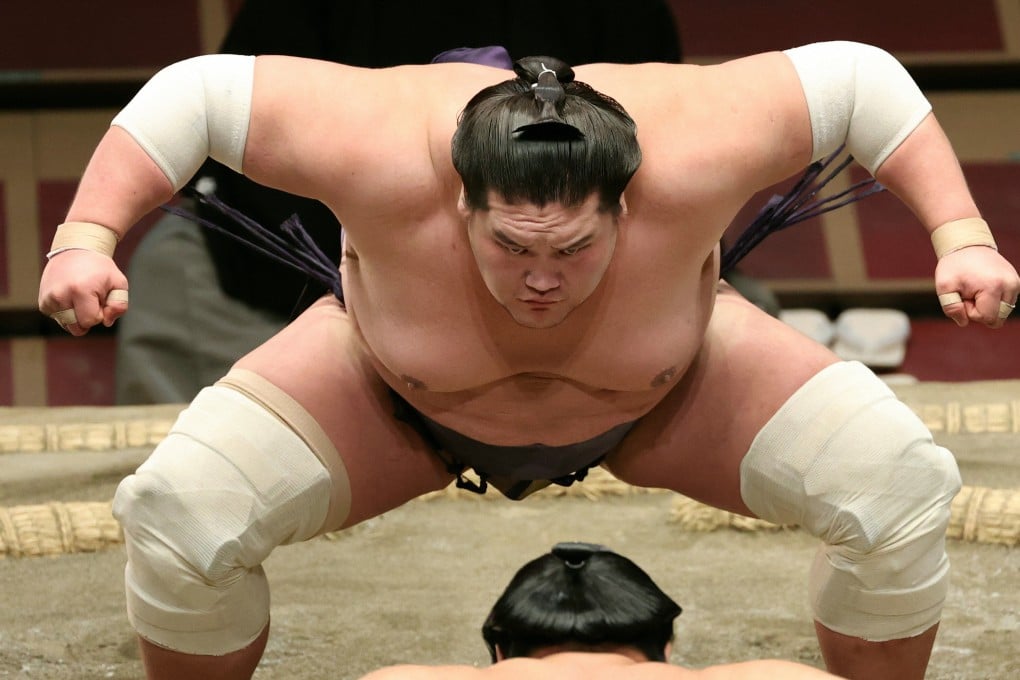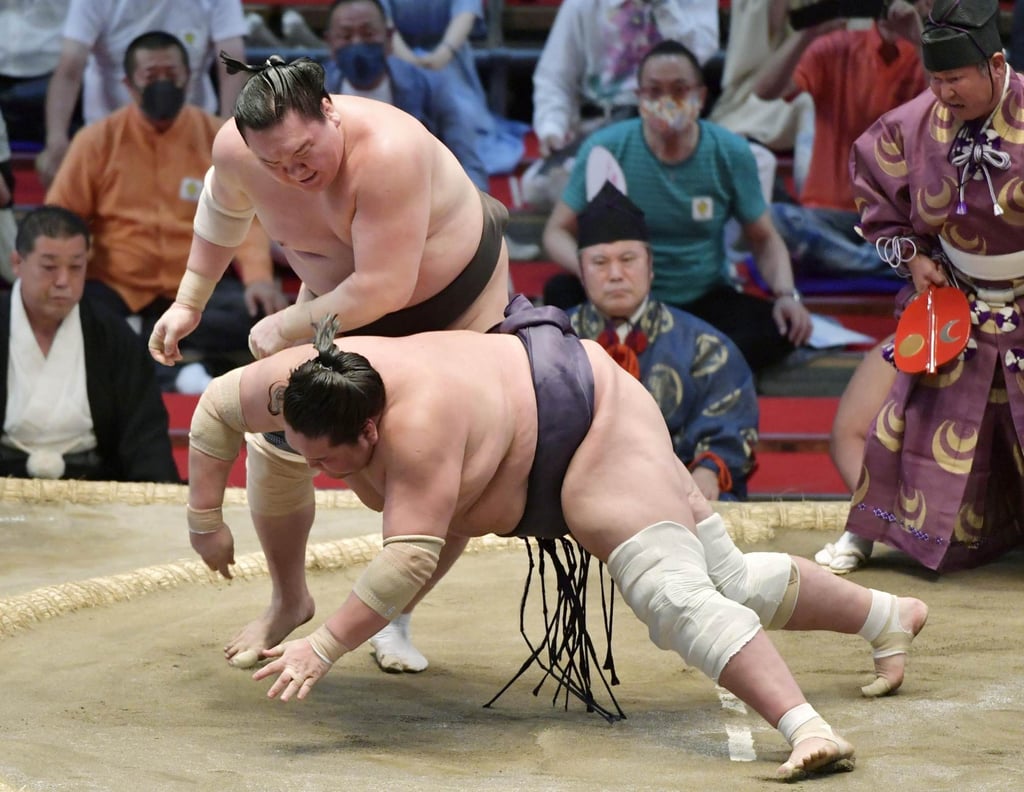Last man standing: how Mongolians came to dominate sumo, Japan’s national sport
- The emergence of Mongolian wrestlers, with new techniques, skills and philosophy, and a dearth of home-grown talent, has created a new era for the sport

It was the final showdown, day 15 of the Nagoya Grand Sumo Tournament, in Japan’s Aichi prefecture. After 14 days and 14 wins for each wrestler, the title bout on July 18 was made all the more tense for its involving grand champion yokozuna Hakuho and second-ranked ozeki Terunofuji, who, after the former’s more than a decade of sumo domination, was widely seen as the next ascendant in the ancient Japanese sport.
As the gyoji (referee) assumed position inside the raised clay dohyo (ring), the two giants set their fists on the floor, and at the signal, launched their combined 340kg of muscle and fat into each other. The champion rammed his forearm into Terunofuji’s face, before the challenger manoeuvred his hand inside Hakuho’s loincloth to attempt a throw, but, drawing on his experience of 1,187 wins in 84 tournaments, the veteran unbalanced Terunofuji and with an outside arm grip sent him face first to the ground.

Landlocked Mongolia is a country of just 3.3 million people, but during the Naadam Festival – an annual celebration of the traditional Mongolian sports of bokh wrestling, archery and horse racing – there can be as many as 20,000 wrestlers on any given day. In 2020, there were 683 active, professional sumo wrestlers in all of Japan.
